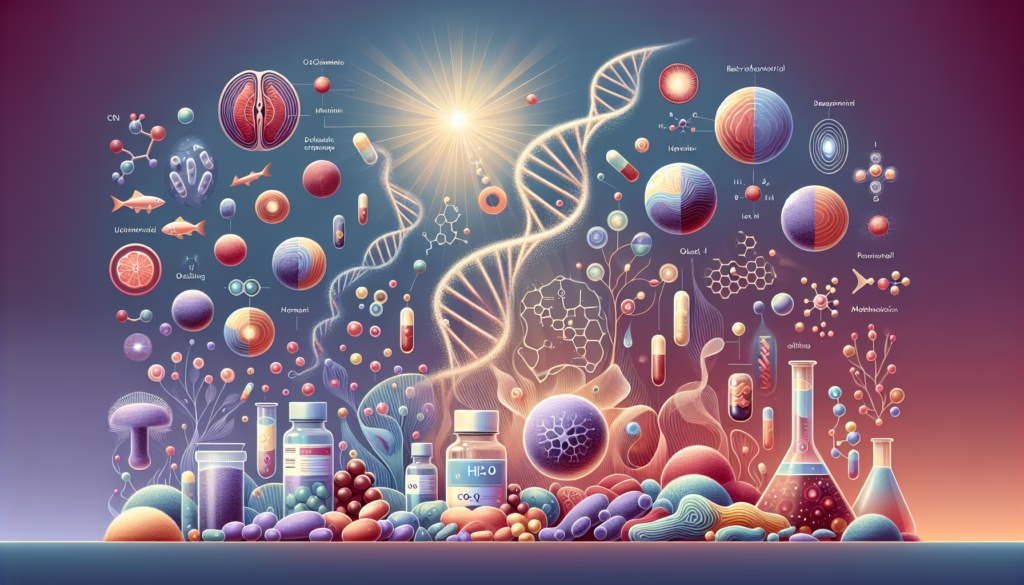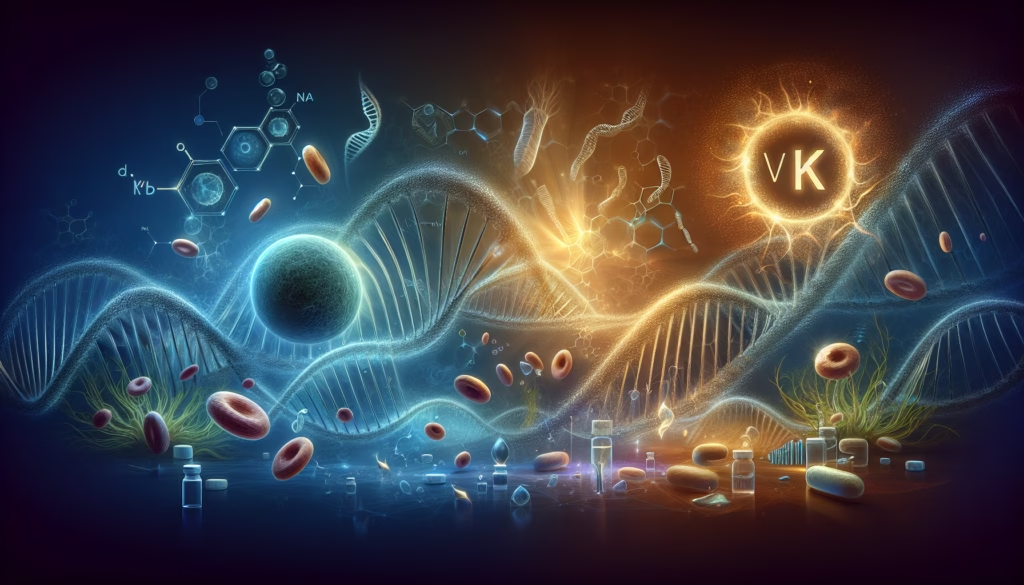
Beta Glucan
Discover the science-backed potential of beta glucan as an adjunct in cancer therapy. This post delves into the latest research
Click 
Cnidium Monnieri, a traditional Chinese medicinal herb, has been getting some significant attention for its potential anti-cancer properties. Its bioactive compounds, particularly osthole, have demonstrated promising effects across various cancer types.
Here is an exploration of its mechanisms and therapeutic potential.
Osthole: A naturally occurring coumarin isolated from Cnidium Monnieri, osthole has been extensively studied for its anti-cancer effects. It regulates apoptosis, cell-cycle arrest, and autophagy in cancer cells2610.
Other Phytochemicals: Compounds such as xanthotoxol and cniforins also contribute to its therapeutic properties89.
Induction of Apoptosis:
Cnidium Monnieri extracts (CME) promote apoptosis by regulating mitochondrial-mediated pathways. This involves the activation of pro-apoptotic proteins like Bax and Bak and suppression of anti-apoptotic proteins such as Bcl-25.
Osthole induces apoptosis in various cancer cell lines, including breast, lung, and colon cancers, by inhibiting pathways like PI3K/Akt and mTOR410.
Cell Cycle Arrest:
Regulation of Autophagy:
In pancreatic cancer cells, osthole disrupts autophagic flux by blocking autophagosome-lysosome fusion, leading to excessive autophagosome accumulation and cell death10.
Pathway Modulation:
Hepatocellular Carcinoma (HCC):
Gastric Cancer:
Osthole inhibits gastric cancer cell proliferation via G2/M phase arrest and suppression of PI3K/Akt signaling2.
Breast Cancer:
Pancreatic Cancer (PC):
Osthole’s ability to induce lethal autophagy arrest offers a novel therapeutic strategy for PC treatment10.
Colon Cancer:
CME induces apoptosis in colon cancer cells via mitochondrial pathways independent of AMPK activation5.
The anti-cancer properties of Cnidium Monnieri are primarily attributed to its bioactive compounds like osthole, which target multiple pathways to inhibit proliferation, induce apoptosis, regulate autophagy, and suppress metastasis across various cancer types. These findings highlight its potential as a multi-targeted therapeutic agent in modern oncology.
Further clinical studies are warranted to validate these mechanisms and explore its integration into conventional cancer therapies.
Dosage recommendations for Cnidium Monnieri or its active compound osthole in cancer treatment are primarily derived from in vitro studies, as clinical data is still limited.
These are findings from research studies:
Gastric Cancer:
Osthole inhibited gastric cancer cell proliferation at concentrations of 20, 40, and 80 µM over 48 hours. The effects were dose-dependent, leading to cell cycle arrest at the G2/M phase without significant apoptosis induction1.
Breast Cancer:
In breast cancer cell studies, osthole was tested at doses of 10, 20, and 50 µM for 48 hours. It significantly inhibited cell proliferation and migration in a dose-dependent manner8.
Colon Cancer:
Ethanol extracts of Cnidium Monnieri (CME) showed cytotoxic effects on colon cancer cells at concentrations ranging from 120 to 200 µg/ml over 24 hours, inducing apoptosis via mitochondrial pathways3.
General Anticancer Effects:
These dosages are specific to laboratory conditions and may not directly translate to human use.
Factors such as bioavailability, metabolism, and individual health conditions must be considered for clinical application.
Current evidence does not provide standardised dosing for humans, and further clinical trials are necessary.
While promising anti-cancer effects have been observed with osthole and CME in vitro, no established dosage guidelines for human cancer treatment exist yet. Consultation with healthcare professionals and ongoing research are essential before considering therapeutic use.
Brain Cancer, Breast Cancer, Cervical Cancer, Colorectal Cancer, Gastrointestinal Stromal Tumor (GIST), Leukemia, Liver Cancer, Lung Cancer, Ovarian Cancer, Pancreatic Cancer, Prostate Cancer
Both Cnidium Monnieri and its active compound, osthole, have been associated with several side effects. These vary depending on the dosage, mode of administration, and individual health conditions.
Gastrointestinal Issues:
Neurological Symptoms:
Muscle contractions, spasticity, seizures, and convulsions can occur, especially at higher doses1.
Drowsiness and Sedation:
Breathing Difficulties:
Difficulty or labored breathing has been noted in some cases1.
Liver and Kidney Toxicity:
Acute Toxicity:
The LD50 of osthole is approximately 710 mg/kg in mice. At high doses (500–1000 mg/kg), symptoms such as hyperventilation, tremors, photophobia, and aggressiveness were observed2.
Subchronic Toxicity:
Prolonged exposure to osthole resulted in alterations in biochemical markers (e.g., creatinine, urea) and histopathological changes in organs like the liver and kidney2.
Pregnancy and Breastfeeding:
Blood Clotting:
Drug Interactions:
While Cnidium Monnieri shows potential therapeutic benefits, it carries risks of gastrointestinal distress, neurological symptoms, organ toxicity (particularly liver and kidneys), and drug interactions. Careful monitoring of dosage is essential to minimise adverse effects, and individuals with pre-existing conditions should consult healthcare professionals before use.
Cnidium Monnieri and its active compound osthole have been tested in combination with other therapies for enhanced anticancer effects.
Below are the key findings:
Osthole and Cisplatin:
In a study on NCI-H460 lung cancer cells, combining osthole (50 µM) with cisplatin (1.5 µM) resulted in significantly greater efficacy in growth inhibition and apoptosis induction compared to either agent alone. This combination therapy showed enhanced apoptotic effects, suggesting synergistic activity that could potentially reduce cisplatin dosage and associated side effects2.
Osthole and Embelin:
Osthole (100 µM) combined with embelin (50 µM), a plant-based benzoquinone derivative, demonstrated a synergistic effect in inducing apoptosis in A549 lung cancer cells. The combination treatment significantly increased the percentage of apoptotic cells compared to monotherapy, along with greater changes in apoptosis-related proteins such as Bcl-2, Bax, caspase-3, and caspase-93.
CME and Pathway Modulators:
Cnidium Monnieri extract (CME) was tested alongside compounds like LY294002 (a PI3K inhibitor) and Compound C (an AMPK inhibitor) in HCT116 colon cancer cells. The combination enhanced the apoptotic effects by modulating pathways such as Akt/mTOR and mitochondrial-mediated apoptosis regulators like Bax and Bak1.
Enhanced anticancer efficacy through synergistic effects.
Reduction of drug resistance commonly seen with conventional therapies.
Lower doses of chemotherapeutic agents required, potentially minimising side effects.
The combination of Cnidium Monnieri or osthole with conventional chemotherapeutic agents or other natural compounds has shown promising results in preclinical studies, particularly for lung and colon cancers. These findings highlight its potential role in integrative oncology, warranting further clinical trials to validate its efficacy and safety.
The use of Cnidium Monnieri (CM) may have both positive and negative impacts on quality of life, depending on the individual’s health status, dosage, and treatment goals. Below is an analysis based on current evidence:
Anti-Inflammatory and Pain Relief:
CM has anti-inflammatory properties that may alleviate symptoms of chronic inflammation, potentially improving comfort in conditions like dermatitis or cancer-related inflammation7.
Its antipruritic effects (anti-itch) may enhance the quality of life for individuals with skin conditions like eczema or allergic reactions7.
Energy and General Well-Being:
Cancer Symptom Management:
Antibacterial and Antifungal Properties:
Gastrointestinal Discomfort:
Neurological Symptoms:
At higher doses, CM has been associated with muscle contractions, spasticity, seizures, and drowsiness, which could impair physical mobility and mental clarity2.
Breathing Difficulties:
Some users have reported laboured or difficult breathing, which could significantly affect daily activities2.
Risk of Overdose:
Exceeding recommended doses can lead to serious adverse effects such as convulsions or seizures, further compromising quality of life2.
Drug Interactions:
Cancer Patients:
While CM shows promise in reducing cancer progression, its side effects (e.g., gastrointestinal distress) might offset some benefits in patients already experiencing symptoms like nausea or fatigue due to cancer treatment.
Elderly and Immunocompromised Individuals:
CM’s antifungal and antibacterial properties may help prevent infections in these populations but should be used cautiously due to potential side effects like drowsiness and gastrointestinal issues9.
Cnidium Monnieri has the potential to positively impact quality of life by alleviating inflammation, infections, and possibly cancer symptoms. However, its side effects—particularly gastrointestinal discomfort, neurological symptoms, and drug interactions—could negatively affect daily functioning if not carefully managed. Individual responses vary widely; therefore, consultation with a healthcare provider is essential before use.
We’ve done our best to include as much information as possible for this supplement.
If you have any other questions, please send us a message or join our Skool Group and ask our knowledgeable and friendly community.
Cnidium Monnieri is generally available as a herbal supplement in various forms. However, regulatory status and accessibility might differ across countries.
No specific patient response rates found in peer-reviewed literature for this query. Future studies should aim to investigate the effects of Cnidium Monnieri across diverse cancer warriors populations.
No definitive resistance mechanisms to Cnidium Monnieri or osthole have been identified. Their broad targeting of oncogenic pathways likely delays resistance, but theoretical risks exist (e.g., pathway redundancy). Further studies are needed to explore long-term resistance patterns in clinical settings.
Several preclinical studies, primarily conducted in vitro and in vivo using animal models, have investigated the potential anti-cancer properties of Cnidium Monnieri and its bioactive compounds. These studies suggest possible effects on cell proliferation, apoptosis, and angiogenesis in specific cancer cell lines. However, these findings need further validation through rigorous clinical trials in humans to establish their relevance and potential therapeutic applications.
Gastric Cancer:
Osthole inhibits gastric cancer cell proliferation by inducing cell cycle arrest at the G2/M phase and suppressing PI3K/Akt signaling1.
Lung Cancer:
Osthole induces apoptosis in lung cancer cells by inhibiting growth and promoting mitochondrial-mediated cell death pathways2.
Pancreatic Cancer:
Osthole suppresses pancreatic cancer growth both in vitro and in vivo by inducing autophagosome accumulation and blocking autophagic flux, leading to apoptosis3.
Hepatocellular Carcinoma (Liver Cancer):
Breast Cancer:
Cervical Cancer:
Leukemia:
Ovarian Cancer:
Studies suggest osthole possesses anti-cancer properties in ovarian cancer1.
Medulloblastoma (Brain Cancer):
Osthole reduces proliferation and induces apoptosis in medulloblastoma cells4.
Prostate Cancer:
Osthole has been tested against both hormone-sensitive and hormone-independent prostate cancer cell lines, showing anti-proliferative effects4.
Colorectal Cancer:
The broad spectrum of cancers studied highlights the versatility of Cnidium Monnieri, particularly its active compound osthole, as a potential multi-targeted anti-cancer agent. Further clinical trials are needed to validate these findings for therapeutic applications.
As of now, no actively recruiting clinical trials investigating Cnidium Monnieri for cancer treatment are listed in major research databases. Check for updates at clinicaltrials.gov.
Research exploring the influence of genetic markers on Cnidium Monnieri’s effectiveness in cancer treatment is currently lacking.

Discover the science-backed potential of beta glucan as an adjunct in cancer therapy. This post delves into the latest research

Explore the emerging world of hydrogen gas (H₂), also known as Brown Gas, and its remarkable potential as an adjunct

Explore the latest scientific insights into vitamin K2 and its promising role in cancer therapy. In this comprehensive blog post,
Apoptosis, or programmed cell death, is a natural process where cells self-destruct when they are damaged or no longer needed. This is crucial for maintaining healthy tissues and preventing diseases like cancer.
Drugs and supplements that induce apoptosis help eliminate cancerous cells by triggering this self-destruct mechanism, ensuring that harmful cells are removed without damaging surrounding healthy tissue.
Understanding and harnessing apoptosis is vital in the fight against cancer, as it targets the root cause of the disease at the cellular level.
Cell proliferation is the process by which cells grow and divide to produce more cells. While this is essential for growth and healing, uncontrolled cell proliferation can lead to cancer.
Drugs and supplements that inhibit cell proliferation help prevent the rapid multiplication of cancerous cells, slowing down or stopping the progression of the disease.
By targeting the mechanisms that drive cell division, these treatments play a vital role in controlling and potentially eradicating cancer.
Cancer cells often hijack specific biological pathways to grow and spread. Drugs and supplements that target these pathways can disrupt the cancer cell’s ability to survive and multiply.
By focusing on the unique mechanisms that cancer cells use, these treatments can be more effective and cause fewer side effects compared to traditional therapies.
Targeting specific pathways is a key strategy in precision medicine, offering a tailored approach to combat cancer at its core.
Angiogenesis is the process by which new blood vessels form, supplying nutrients and oxygen to tissues. Cancer cells exploit this process to fuel their growth and spread.
Drugs and supplements that inhibit angiogenesis can effectively starve cancer cells by blocking the formation of these new blood vessels.
By cutting off the supply lines that tumors rely on, angiogenesis inhibitors play a crucial role in controlling and potentially shrinking cancerous growths.
Immunotherapy harnesses the power of the body’s immune system to combat cancer. By boosting or restoring the immune system’s natural ability to detect and destroy cancer cells, immunotherapy offers a targeted and effective approach to treatment.
Drugs and supplements that support immunotherapy can enhance the immune response, making it more efficient at identifying and attacking cancer cells.
This innovative approach not only helps in treating cancer but also reduces the risk of recurrence, providing a powerful tool in the fight against this disease.
Inflammation is the body’s natural response to injury or infection, but chronic inflammation can contribute to the development and progression of cancer.
Drugs and supplements with anti-inflammatory properties help reduce inflammation, thereby lowering the risk of cancer and other chronic diseases.
By targeting the inflammatory processes, these treatments can help maintain a healthier cellular environment and prevent the conditions that allow cancer to thrive.